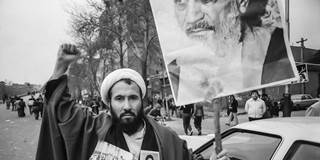US President Donald Trump’s administration seems to hope that, with a nudge from sanctions, ordinary Iranians will rise up and overthrow the Islamic Republic. But the economic data do not support the view that the Iranian public has been driven into abject poverty since 1979, let alone that it is on the brink of revolting.
BLACKSBURG, VIRGINIA – The Islamic Republic of Iran marks its 40th anniversary this week. But, with the country beset by a severe economic crisis, the question on everyone’s lips –within Iran and the diaspora alike – seems to be whether the Islamic Revolution has actually improved Iranians’ lives.
Since last May, when the United States withdrew from the 2015 Joint Comprehensive Plan of Action – better known as the Iran nuclear deal – and re-imposed its toughest sanctions on Iran, the Iranian economy has taken a nosedive. The currency has lost 70% of its value, and prices are rising at a 40% annual rate, placing new strain on an already underperforming economy, in which one-third of university-educated young people are out of work.
US President Donald Trump’s administration seems to hope that, with a nudge from sanctions, ordinary Iranians will rise up and overthrow the Islamic Republic. In a major speech to the Iranian-American community last July – widely viewed as a call for regime change – US Secretary of State Mike Pompeo declared that the Islamic regime had put “Iran into a long-term economic tailspin,” pushing “a third of Iranians … below the poverty line.”

BLACKSBURG, VIRGINIA – The Islamic Republic of Iran marks its 40th anniversary this week. But, with the country beset by a severe economic crisis, the question on everyone’s lips –within Iran and the diaspora alike – seems to be whether the Islamic Revolution has actually improved Iranians’ lives.
Since last May, when the United States withdrew from the 2015 Joint Comprehensive Plan of Action – better known as the Iran nuclear deal – and re-imposed its toughest sanctions on Iran, the Iranian economy has taken a nosedive. The currency has lost 70% of its value, and prices are rising at a 40% annual rate, placing new strain on an already underperforming economy, in which one-third of university-educated young people are out of work.
US President Donald Trump’s administration seems to hope that, with a nudge from sanctions, ordinary Iranians will rise up and overthrow the Islamic Republic. In a major speech to the Iranian-American community last July – widely viewed as a call for regime change – US Secretary of State Mike Pompeo declared that the Islamic regime had put “Iran into a long-term economic tailspin,” pushing “a third of Iranians … below the poverty line.”